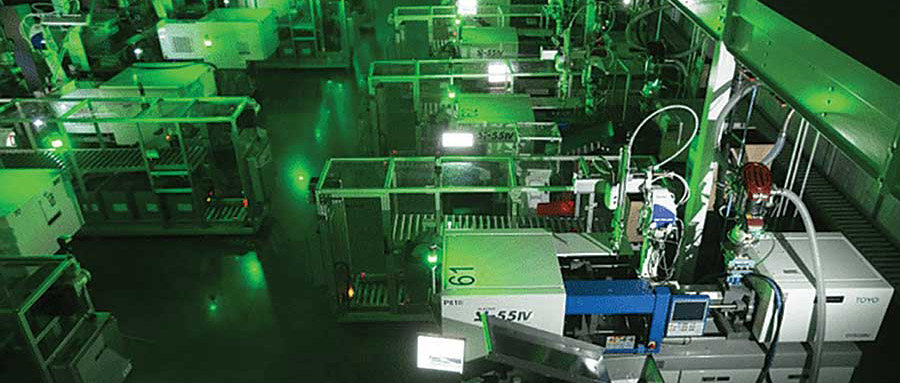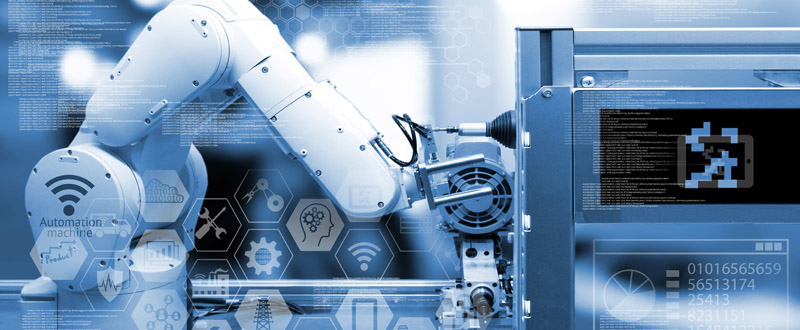“Lights-Out” manufacturing is a manufacturing method (or concept), not a specific process.
The factory using “Lights-Out manufacturing” is fully automated and does not require on-site personnel. These factories are believed to be able to operate “light off”. Many factories have the ability to turn off lights, but few factories specifically turn off lights.
Generally, in computer numerical control (CNC) processing, workers are required to set up a tombstone that can hold the parts to be manufactured and take out the finished parts. As more and more technologies are required to achieve full automation, many factories have begun to use unattended production between shifts (or as separate shifts) to meet growing production needs or save labor. In fact, modern technology can be used not only in large-scale manufacturing operations, but also in small CNC workshops for unattended production.
Precision machining can produce even the most complex parts and components accurately and efficiently. “Lights-Out” machining is a way for precision machining companies to further increase productivity and efficiency. Here, we introduce what is “Lights-Out” machining, what factors must be considered and how it affects the processing process and the final product.
 What does it mean to “lights-out” machining?
What does it mean to “lights-out” machining?
Lights out machining is a technique or method used by precision machining companies and other manufacturers. It refers to automated processes and mechanical functions that can be operated with minimal manual input. Since the automated process does not require human supervision or control, it can continue outside of working hours or even overnight, so, call “lights out”. Even after workers and employees go home, the machine can continue to work to produce higher output.
How does “lights-out” machining work?
Technologies that allow for lights-out machining are becoming easier to obtain and use. Processes and mechanical functions can be fully automated, allowing production to continue without manual intervention. In precision machining, manual input may be required to create designs and adjust settings on the machine. However, to produce multiple pieces of the same piece, no continuous attention from the operator is required, so precision machining can be continued unattended outside of working hours. Although the machine operates without continuous supervision, the usual practice is to always have a person near the machine.
Consideration Before “Lights-out” Machining
 Assuming that the types of parts produced during lights-out manufacturing are suitable for unattended operation, some basic issues need to be considered.
Assuming that the types of parts produced during lights-out manufacturing are suitable for unattended operation, some basic issues need to be considered.
The Reliability Of The Equipment.
Since no one solves mechanical failures on site, machine tools, peripheral equipment and automation equipment dedicated to production operations must be able to operate perfectly. Questions about workshop capabilities include machine tools, chip and coolant management, and material handling.
Mechanical Tools.
Can the machine run continuously? Is it highly stable and strong? Does it have suitable spindle power? Does it have enough tool stations to automatically provide sufficient cutting tools? Can the control system monitor activity and automatically correct or communicate problems remotely? Does it have built-in thermal compensation and anti-collision technology?
Chip And Coolant Management.
Can the chip conveyor adequately handle the quantity and type of chips produced during the entire production process? Can the conveyor filter the coolant effectively to prevent the fine powder from contaminating the cutting fluid and possibly clogging the coolant delivery nozzle or causing pump failure? If high-pressure coolant delivery is required, can the delivery system be programmed to change the pressure throughout the processing cycle if necessary?
Planned Preventive Maintenance.
Although such a program is invaluable regardless of whether or not lights-out manufacturing is performed, it is essential for overnight operations. If the machine breaks down at any time, this is a problem, but if there are machine operators, they can change the production plan or use other machines until they get help. When a machine breaks down during an unattended shift, work will stop and valuable running time will be wasted until someone can solve the problem. Whether using an internal plan or signing a contract with a reliable service provider, a preventive maintenance plan is essential for lights-out operations.
Remote Monitoring.
Although the use of reliable equipment and a planned preventive maintenance program can minimize problems, there is always the possibility of machine failure, cutting tool damage, power failure, and other unexpected problems. That is the value of having a remote monitoring system. Many CNC machine tool controllers and peripherals are designed to work with Ethernet or other communication tools to send alarms to PCs or mobile devices that need them.
Not every application is suitable for lights out manufacturing. Some parts are too complex to manage successfully without operator intervention.
The CNC machines most suitable for lights-out production are grinders, horizontal and vertical machining centers, multi-function lathes, and two- and four-axis lathes. To ensure that the system maintains accuracy throughout the power outage, many manufacturers use process control equipment suitable for the machine tool and application. And also they usually always have a person in the workshop.
Benefits of “Lights Out” Machining
Because even without manual operation, lights-out machining can continue production, so there are many advantages.
Increased Machine Productivity
Lightweight processing means that the machine tool can continue to run for a longer period of time without manual intervention, and can run 24 hours a day if necessary. This can significantly increase the productivity and output of the machine. Although the number of on-site machines may be limited, keeping them running for a long time can still increase productivity.
Machine operators can make more efficient use of their time by performing production during the day and overnight production, more short-term production, work monitoring of more complex parts, and can complete urgent orders for customers during the day shift Responsiveness.
Costs Effective
Since there is no need to provide too many workers during the processing of turning off the lights, labor costs are reduced, but other costs can be saved at the same time, thereby reducing relative production costs.
Finally, power companies usually reduce their energy bills during off-hours (overnight), so it may be cheaper to operate machines during power outages.


